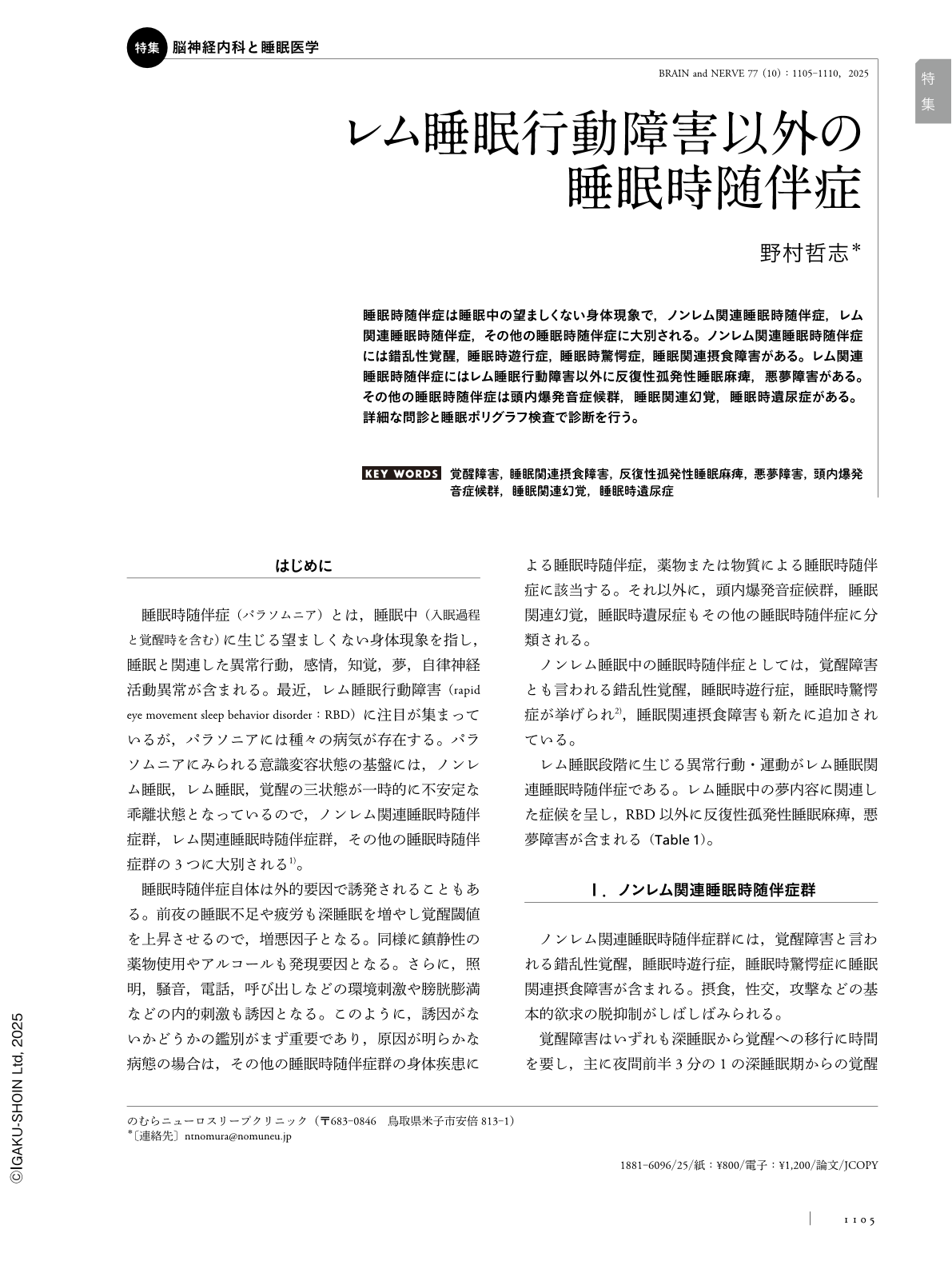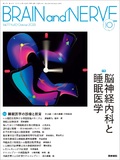Japanese
English
- 有料閲覧
- Abstract 文献概要
- 1ページ目 Look Inside
- 参考文献 Reference
睡眠時随伴症は睡眠中の望ましくない身体現象で,ノンレム関連睡眠時随伴症,レム関連睡眠時随伴症,その他の睡眠時随伴症に大別される。ノンレム関連睡眠時随伴症には錯乱性覚醒,睡眠時遊行症,睡眠時驚愕症,睡眠関連摂食障害がある。レム関連睡眠時随伴症にはレム睡眠行動障害以外に反復性孤発性睡眠麻痺,悪夢障害がある。その他の睡眠時随伴症は頭内爆発音症候群,睡眠関連幻覚,睡眠時遺尿症がある。詳細な問診と睡眠ポリグラフ検査で診断を行う。
Abstract
Parasomnia is an undesirable physical phenomena that occurs during sleep and is classified into three groups: non-rapid eye movement (REM), REM, and other parasomnias. Non-REM parasomnias that occur during non-REM sleep include wakefulness disorders, including confusional arousal, sleepwalking, sleep terrors, and newly added sleep-related eating disorders. REM sleep parasomnias related to dream content during REM sleep include isolated sleep paralysis and nightmare disorder, in addition to REM sleep behavior disorder. Other types of parasomnia that are not specific to non-REM sleep and REM sleep include explosive head syndrome, sleep-related hallucinations, sleep enuresis, parasomnia due to physical diseases, and parasomnia due to medicines and substances. It is necessary to conduct a detailed interview about the time of symptom onset and contest of symptoms to confirm whether the mechanism is due to non-REM sleep, REM sleep, or wakefulness with polysomnography and to make a diagnosis. It is important to explain each disease to patients and caregivers and provide treatment for each parasomnia.

Copyright © 2025, Igaku-Shoin Ltd. All rights reserved.


